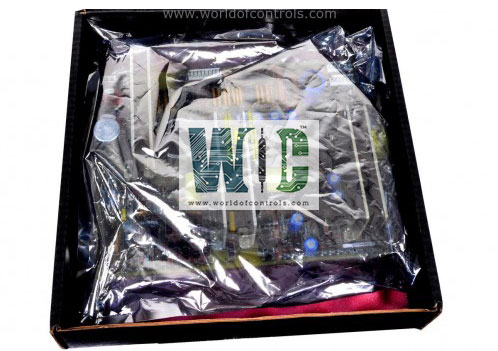SPECIFICATIONS
Part No.: IS200TBDTH2A
Manufacturer: General Electric
Country of Manufacture: United States of America (USA)
Technology: Surface-mount
Temperature Operating: -30 to 65oC
Product Type: Terminal Board
Availability: In Stock
Series: Mark VIe
Functional Description
IS200TBDTH2A is a Terminal Board developed by GE. It is a part of the Mark VIe control system. The Mark VIe control system intricately operates steam and gas turbines to manage the critical components of power generation, balance of plant (BOP) equipment. The Mark VIe system excels in ensuring seamless functionality and safeguarding operational integrity.
Terminal Board Features
- RTD Signal Handling: The TBDTH2A supports multiple RTD input channels and ensures proper impedance matching and signal integrity. It typically works in conjunction with RTD input modules (such as the PTUR or PRTD I/O packs), providing cold junction compensation and signal isolation as required.
- Redundancy and Reliability: The Mark VIe system architecture allows for dual or triple redundant I/O configurations, depending on system requirements. This redundancy is extended to terminal boards like the TBDTH2A through independent signal paths and fault-tolerant design, minimizing the impact of single-point failures and ensuring high system availability.
- Maintenance and Diagnostics: Designed for ease of replacement and field servicing. They include clear terminal markings, robust connectors, and standardized form factors. The Mark VIe system further supports built-in diagnostics at the I/O module level, enabling early detection of wiring faults, sensor degradation, or open circuits.
- Proximity-Based I/O Design: A notable aspect of the Mark VIe architecture is the ability to locate I/O modules and terminal boards close to the field instrumentation or controlled devices. This approach reduces cable lengths, minimizes electrical noise, and enhances signal fidelity. For temperature sensing, this proximity ensures timely and accurate thermal data acquisition, which is crucial for real-time turbine control logic.
System IONet Features
- Adherence to specific guidelines ensures optimal performance and reliability, particularly in the deployment of Single-Mode Fiber (SMF) systems. These guidelines, meticulously crafted to uphold the system's integrity, delineate crucial rules for architects and operators alike.
- First and foremost, the validation of Single-Mode Fiber-optic technology, facilitated through the N-Tron 508FXE2-SC-15 switch, underscores the system's compatibility and reliability within the Mark VIe Control IONet framework. This endorsement signifies a robust foundation for communication networks, promising enhanced data transmission capabilities and heightened resilience to environmental factors.
- Furthermore, the imposition of a limit on the number of switches placed in series, capped at five, serves as a safeguard against potential network congestion and performance degradation. By maintaining this constraint, system architects mitigate the risk of signal attenuation and latency, preserving the integrity of data flow across the IONet infrastructure.
- A fundamental tenet guiding the establishment of IONet topologies is the advocacy for a flat and balanced configuration, akin to a star topology. This architectural paradigm fosters efficient data propagation, minimizing signal propagation delays and optimizing network response times. By adhering to this principle, system administrators ensure equitable distribution of resources and mitigate the risk of bottlenecks, thereby fortifying the system's resilience against disruptions.
The WOC team is always available to help you with your Mark VIe requirements. For more information, please contact WOC.
Frequently Asked Questions
What is IS200TBDTH2A?
It is a Terminal Board developed by GE under the Mark VIe series.
What are some common EMC standards for industrial environments?
Common EMC standards include EN 50081-2 for emission requirements, EN 61000-6-2 for immunity requirements, EN 61000-4-2 for electrostatic discharge susceptibility, EN 61000-4-3 for radiated RF immunity, and EN 61000-4-4 for electrical fast transient susceptibility.
What does EN 61000-4-2 cover?
EN 61000-4-2 addresses electrostatic discharge susceptibility, ensuring devices can withstand static electricity discharges without damage or malfunction.
